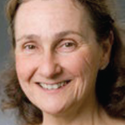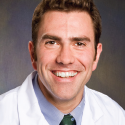Stimulating to Both Specialties
These challenges and learning opportunities can be stimulating to both specialties. They tend to include more complex patients, and academic centers can include trainees in both disciplines, as well as medical students and other ancillary providers.
“We like people who are diagnostic dilemmas,” says Lin Brown, MD, clinical professor of medicine at the Geisel School of Medicine at Dartmouth, Hanover, N.H. “We see patients who have already been seen by either specialty and need another opinion.”
Dr. Merola notes many physicians find this a fun, fulfilling way to practice, which may also have an impact on burnout issues.
Local Situation

Dr. Brown
Many practices put the two physicians in the same room with the patient. Others may go to what Dr. Merola calls a virtual clinic, with structured and closely tied referral networks.
Although there are general models for structuring the rheumatology/dermatology clinic, the specifics are worked out according to the needs and requirements of the individual practices. A number of concerns must be negotiated by the physicians and practice managers.
“The biggest logistical problem is that dermatologists see patients much quicker than the rheumatologists,” said Dr. Brown. “When we see patients together, the rheumatology component slows down the number of patients the dermatologist can see.”
Productivity Concerns
This has impacts on section and physician productivity for the dermatology department.
Handling this disparity may be the most important decision to be made when considering how you want the combined clinic to work. Getting buy-in from partners, practice managers and other stakeholders needs to happen before a viable, long-term program is put in place.

Dr. Merola
How this works will be decided by the needs and requirements of practices. Some may look at treatment outcomes and decide to absorb the efficiency costs. There is a possibility of increased billing from higher complexity. Downstream income opportunities, such as additional reimbursement from radiology or increased patient satisfaction, may be available.
“Some places have had success by finding a workable ratio of patients per physician,” says Dr. Merola, who is also an associate professor at Harvard Medical School. “For example, in our clinic about three dermatologists feed one rheumatologist.”
Rotation of clinic participants can address productivity concerns. As the treatment picture becomes clearer, some patients may no longer need the more intensive features of the rheumatology/dermatology clinic and can be seen only by the specialty covering the most pressing problem.

